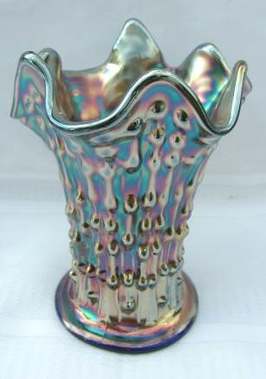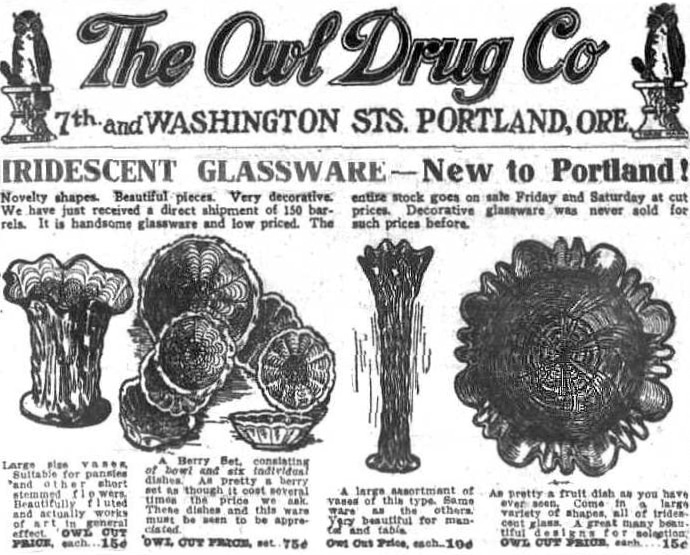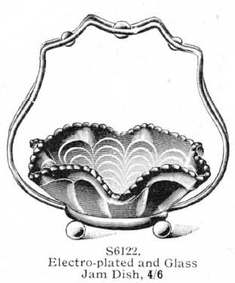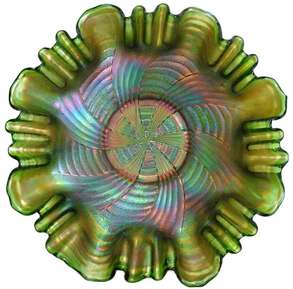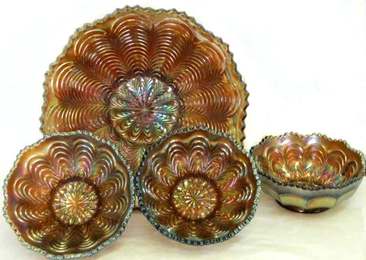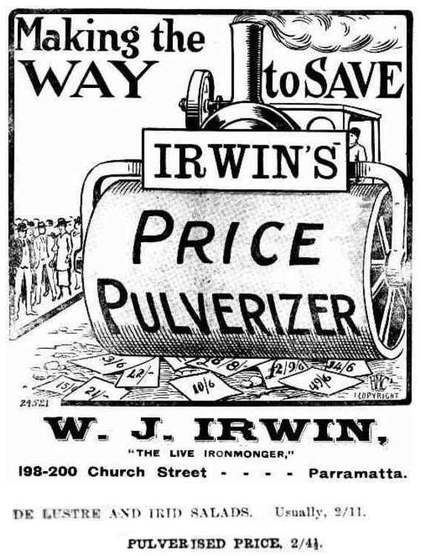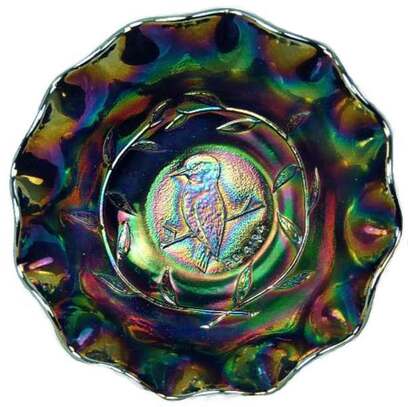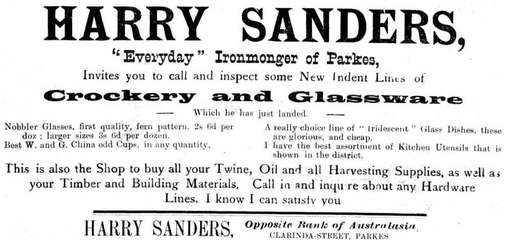Sell Me Some Carnival Glass: Part One
Where did people buy Carnival Glass back in the early days when it was being made?
We’re all familiar with how Carnival Glass was marketed and sold to the public through Mail Order catalogues and Department Stores (often in the Bargain Basements). We have uncovered a lot of fascinating original, contemporary information about such sales outlets, their advertisements and sales techniques (some with a surprisingly modern day feel!). They are all to be found in our unique feature: Carnival Glass Times.
But we felt that there had to be more to it - what other places were selling Carnival Glass back then?
Around the world, across the USA, Australia, New Zealand, the UK and beyond, Carnival was sold in a wide range of shops and sales outlets – accompanied by very clever (and sometimes amusing) ads and sales promotions. Here we present a visual assortment of these contemporary ads from around the world.
Drug Stores
These stores (also called chemist shops or pharmacies in various parts of the world) sold medicines, “drugs”, prescriptions and similar items, alongside fancy goods, candy, toiletries, gifts and yes ... Carnival Glass too!
The ad (below, right) from the Oregon Daily Journal in 1910, is for The Owl Drug Co. and it features a range of “Iridescent Glassware – New to Portland”.
|
The ad explains that 150 barrels of “handsome glassware and low priced” Carnival had just arrived in a direct shipment – the illustrations feature Fenton’s glass, and show April Showers vases (both swung and slightly swung / ”squatty”) as well as a berry set in the Peacock Tail pattern and a Ribbon Tie (aka Comet) “fruit dish”. |
In a fascinating coincidence, in England, many thousands of miles away from Oregon, Boots the Chemist also had Fenton’s Peacock Tail on offer in their 1910 catalogue. The Boots’ example was described as a “jam dish” and was set inside an electro-plated holder. It was an expensive piece too, at 4/6 (four shillings and sixpence). A lot more expensive than the full Peacock Tails berry set was in Oregon (which was 75 cents for the full set). In the money value at the time, the full set in Oregon was around the same price as the single dish in the UK!
Ironmongers
Ironmongers mostly sold hardware, tools and household implements – similar to today’s Hardware and DIY stores. So it seems a curious combination – tools and glass – but sales opportunities crossed many boundaries. The ad below is from a 1923 Australian newspaper showing W.J. Irwin, “The Live Ironmonger” was also selling Carnival Glass, using a the brilliantly named cost cutting “Price Pulverizer” promotion. The Carnival in question is described as “De Lustre and Irid”, and we have seen the De Lustre expression several times in Australia, as it was a description used by Crown Crystal for their Carnival, such as the Kingfisher bowl. For more information, see our article: De Lustre Delights.
Another ad for an ironmongers store in Australia was the one shown above, right, in 1911. It is for “Harry Sanders, the ‘Everyday’ Ironmonger” who had just “landed” a range of new lines that included “iridescent glass dishes … glorious and cheap”. The glass would have been from the USA, as of course, Crown Crystal was not making Carnival this early. Harry Sanders store was in Parkes, a town in New South Wales, Australia (about 200 miles west of Sydney).
It’s fascinating to imagine how the store might have looked, with Carnival Glass set out amongst the “twine, oil and harvesting supplies … timber and building materials”.
In Part Two, we look at Furniture Stores, General Stores and Grocery Stores
In Part Three, we look at Drapery Stores, Five & Ten Cents Stores, and China and Glassware Stores
It’s fascinating to imagine how the store might have looked, with Carnival Glass set out amongst the “twine, oil and harvesting supplies … timber and building materials”.
In Part Two, we look at Furniture Stores, General Stores and Grocery Stores
In Part Three, we look at Drapery Stores, Five & Ten Cents Stores, and China and Glassware Stores
